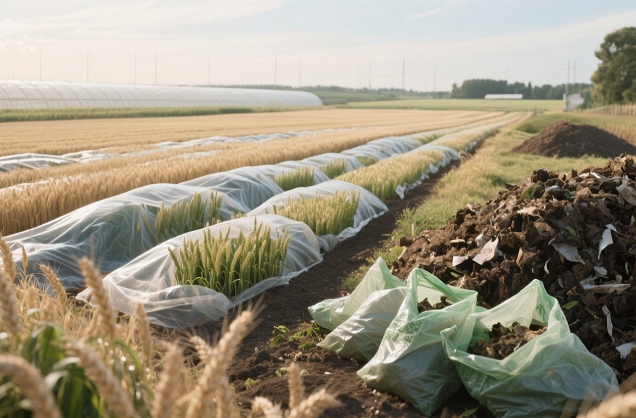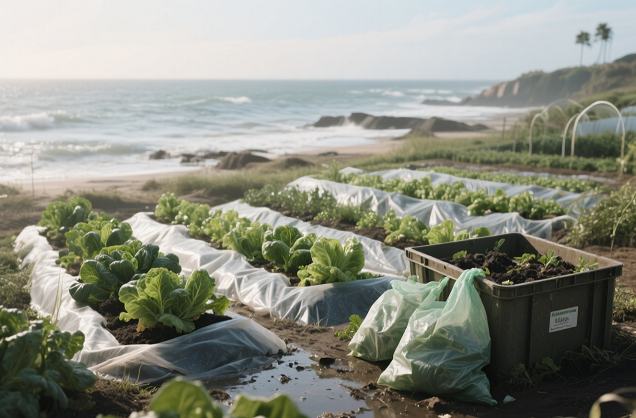Top 10 disruptive biodegradable materials in 2025: PHA, nanocellulose may replace PLA?
Revolutionary Iterations of Biodegradable Materials
As the global plastic ban escalates, the limitations of traditional PLA (Polylactic Acid) are becoming apparent - reliance on industrial composting, poor heat resistance, and high cost. 2024 has seen a number of alternatives emerge in the field of new materials with better performance and more complete degradation. Based on data from MIT's Biomaterials Innovation Atlas and the European Union's Circular Economy Laboratory, this article reveals the top 10 biodegradable materials that could disrupt the industry in 2025 and analyzes whether PLA will be obsolete.

Part I: Why PLA needs alternatives?
Three major shortcomings of PLA (2024 market research data)
Problem Data presentation Consequences
Industrial composting dependence Only 23% of cities are equipped with relevant facilities Actual degradation rate is less than 40%
Heat resistance Up to 60°C Unable to be used for hot beverage packaging
Competition from raw materials Increase in price of corn by 35% (2023) Increase in production costs
List of Top 10 Disruptive Materials in 2025
1. PHA (Polyhydroxy fatty acid ester)
Breakthrough point:
Marine degradation: complete decomposition in 30°C seawater for 6 months (Nature 2024)
Carbon negative production: synthesized by converting industrial waste gas using methanogens
Application scenarios: fishing nets, disposable cutlery, medical sutures
Represented by Danimer Scientific (USA), RWDC (Singapore)
2. Nanocellulose composites
Performance comparison:
Tensile strength 85MPa (vs 50MPa for PLA)
40% faster degradation for home composting
Cost trend: expected to drop to $2.8/kg in 2025 (now $3.5)
3. Mycelium packaging
Innovative process:
Cultivated from agricultural waste, 7-day molding of a “living material”
High water resistance (with beeswax coating)
Business case: IKEA has used it for lamp packaging, reducing carbon by 92%
4. Carbon dioxide-based plastics (PPC)
Technology highlights:
Direct capture of CO₂ from industrial emissions as raw material
Bayer, Germany, has achieved 50,000 tons per year of mass production
Shortcomings: currently only suitable for low-strength packaging
5. Chitin-starch composites Core advantages Starch composites
Core strengths:
Extracted from seafood waste, excellent antimicrobial properties
Thai company Tropic already used in food wrap

Part 2: PHA vs Nanocellulose - Who is most likely to be the next generation king?
Performance Benchmarking (2025 Forecast)
Indicators PHA Nanocellulose Composites PLA (control)
Degradation Environment Sea/soil/composting Home composting Industrial composting
Maximum Temperature Resistance 100°C 120°C 60°C
Production Cost ($/kg) 4.2→3.5 (Scale-up) 3.5→2.8 2.1
Layout of Leaders Coca-Cola Investment Mitsubishi Chemical Patents NatureWorks
Expert prognosis:
PHA: dominate marine-related scenarios (may account for 30% of aquatic packaging by 2027)
Nanocellulose: capture high-end packaging market (electronics, luxury goods)
PLA: retreat to low-end disposables

Part III: How do traditional companies cope with the materials revolution?
3-step transformation strategy
Technology cooperation:
Joint development with university labs (e.g. MIT's nano-cellulose extraction patents)
Case: Unilever's investment in Cambridge University's PHA project
Supply chain transformation:
Establishment of agricultural waste recycling network (to reduce the cost of raw materials of chitin/cellulose)
Upgrading of the ESG narrative:
Specific disclosure of the “contribution of carbon emission reduction from new materials” in the annual report “
Obtaining the TÜV ”BioCycle Certified" label

Part 4: How can consumers identify the authenticity?
New Material Certification System 2025
Blue logo: marine degradation certification (PHA applicable)
Green bi-leaf label: home composting certification (nanocellulose)
Red warning: "oxidative degradation" pseudo-environmental materials to be wary of
Purchasing guide
Ingredient checking: recognize keywords such as PHA, Nanocellulose, etc.
Scanning the traceability code: check the video of degradation experiments (some brands have already applied the blockchain for verification)
 Significant progress in PBAT/s
Significant progress in PBAT/s
 PLA/PBAT composite film degrad
PLA/PBAT composite film degrad
 A New Choice for Takeaway Pack
A New Choice for Takeaway Pack
 Significant progress in PBAT+s
Significant progress in PBAT+s
CONTACT
Add: Room 4006, No.1 Helong Yiheng Road, Baiyun District, Guangzhou City
Tel: +8613450255948
Wechat : +86-13450255948
Fax: +86-13450255948
E-mail: 13450255948@163.com








